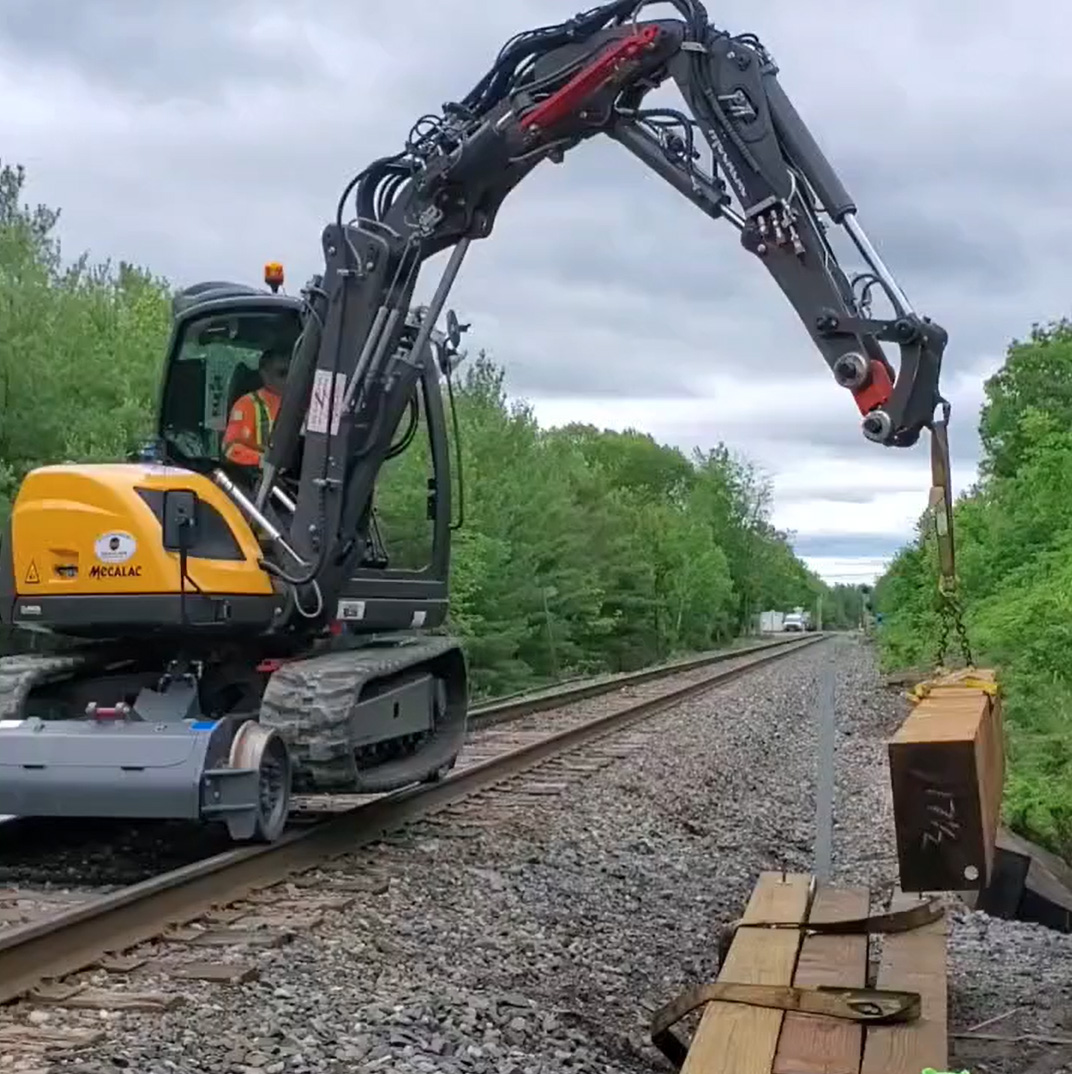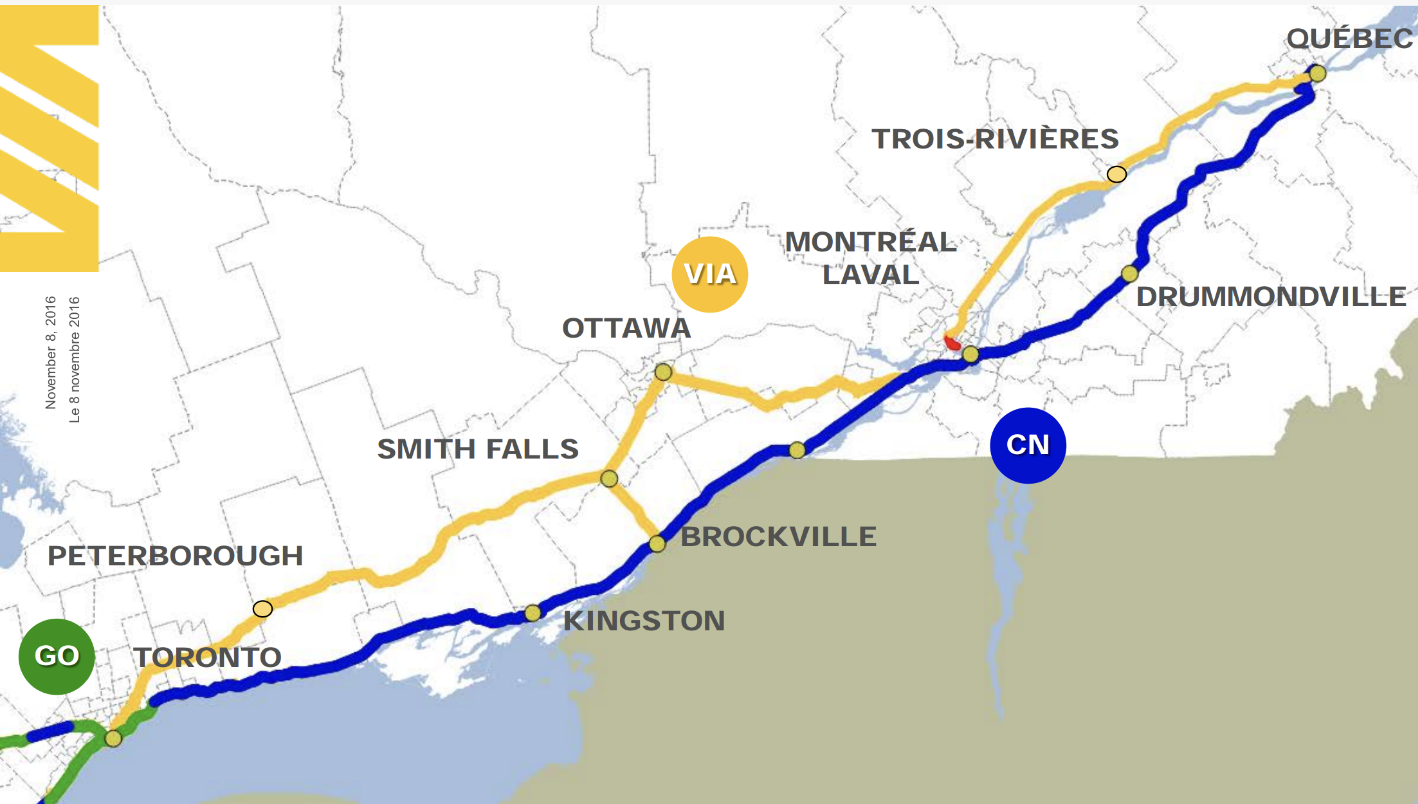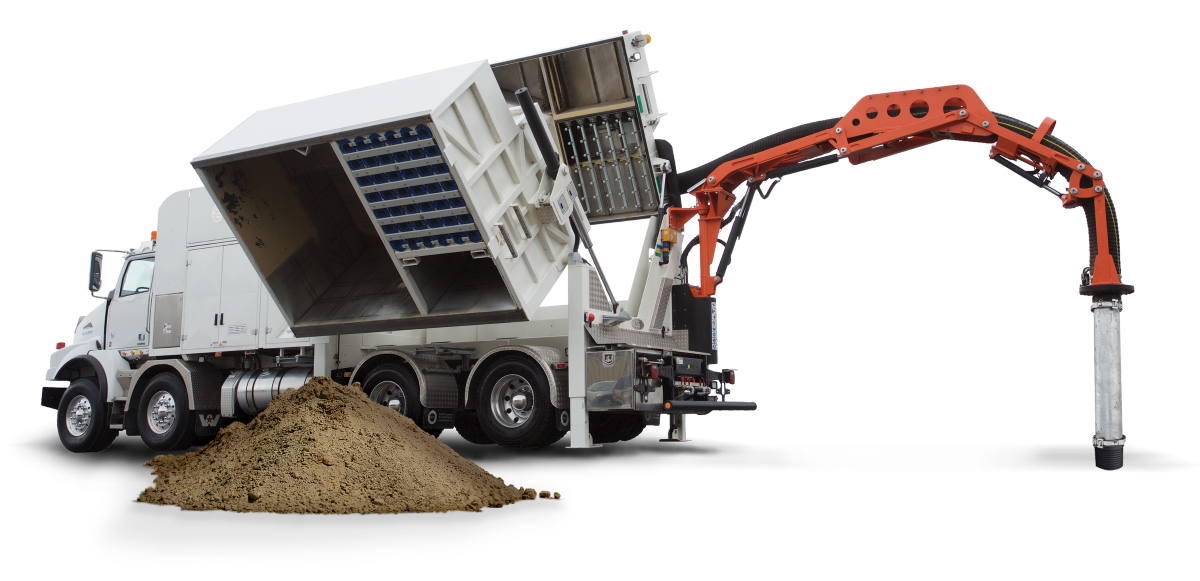
Rail Safety in Canada
Original source: Rail Safety in Canada (Transport Canada)
With nearly 41,711 route-kilometers of track, Canada has the third-largest rail network in the world. Railways played a key role in shaping our country. They continue to be important for our economy as a primary mode of freight transportation.
The Canadian rail system has both federal and provincial railways. Railways that cross provincial or international boundaries are governed federally. Railways that only operate within a province are governed provincially.
Transport Canada’s Rail Safety Program
Transport Canada develops and implements policies and regulations, and administers the Railway Safety Act. The department conducts approximately 33,000 railway safety inspections every year.
We inspect companies and road authorities to ensure they comply with the Act, and with regulations, rules, and engineering standards made under the Act. Rail safety inspectors conduct inspections (including audits) to determine whether a railway’s operations, equipment, signals and infrastructure support safety.
We also review and update the legislation on rail safety. The Act has been reviewed 4 times since coming into force in 1989. The most recent review was done in 2017 to 2018 by an independent panel.
The Railway Safety Act
The main legislation that gives Transport Canada responsibility for overseeing rail safety is the Railway Safety Act.
The main legislation that gives Transport Canada responsibility for overseeing rail safety is the Full list of regulations, rules and standards pursuant to the Railway Safety Act.
The Act introduced the basic principle that railway companies are responsible for the safety of their own operations. On the other hand, Transport Canada has the power to protect people, property and the environment by ensuring railways operate safely within a national framework. Under the Act, we maintain the regulations to advance safety and oversee the federal railways.
The objectives of the Railway Safety Act are found in section 3(1) of the Act:
- promote and provide for the safety and security of the public and personnel, and the protection of property and the environment, in railway operations;
- encourage the collaboration and participation of interested parties in improving railway safety and security;
- recognize the responsibility of companies to demonstrate, by using safety management systems at their disposal, that they continuously manage risks related to safety measures; and,
- facilitate a modern, flexible and efficient regulatory scheme that will ensure the continuing enhancement of railway safety and security.
The Act sets out requirements for anyone operating over the tracks of a federally regulated railway. This doesn’t only include federal railway companies. If a local railway company operates on federally regulated track, it must follow the Act as well (e.g., provincially regulated short lines, light rail transit or tourist trains).
Who must follow the Act
The Act applies to railway companies. It also applies to road authorities and private authorities who share ownership of grade crossings across Canada.
Road authorities are organizations that manage public roads in Canada. Depending on their location, they may include:
- federal departments and agencies
- provinces
- municipalities
- band councils
Private authorities are businesses or people that privately own paths, trails and roads crossing railway tracks. They may include the following types of land owners:
- residential
- agricultural
- industrial
- commercial
- recreational
To operate legally, these railways must have a Railway Operating Certificate issued by Transport Canada. They must also, by law, have a safety management system (SMS).





